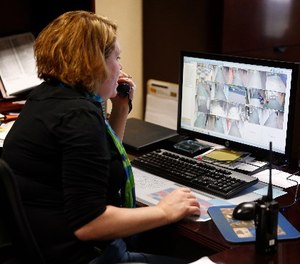
Here's what you need to know to prepare and win school emergency preparedness grants
By Dr. Judy Riffle, P1 Contributor
A few years ago, I wrote a school emergency preparedness grant for a district. The community surrounding the schools had high rates of crime, including heroin use and drug dealing. Past incidents in the district community included an escaped inmate, home invasions and drug cartel issues. In the first four weeks of the school year, dangerous incidents included a bomb scare, a district student being arrested for murder, and a drug cartel style abduction and extortion of a 16-year-old that resulted in a high-speed police pursuit toward the border with Mexico, resulting in the arrest of five suspects and subsequent rescue of the victim.
Thinking of violent incidents in that school district, along with those such as Columbine, Sandy Hook and Virginia Tech, I was passionate about working on that school emergency preparedness grant proposal and ecstatic when it was funded. The $30,000 grant program helped the school district acquire much needed training, community planning meetings, school site emergency toolkits, police radios, tablets and WIFI routers and updating the Emergency Response Plan. This grant allowed school security personnel and community first responders to enhance their work together in keeping students, staff and the public safe.
So how can you prepare such a grant proposal to make it stand out from the rest and increase your chances of funding? Here are some tips.
Make the reviewer feel as if they live in that community, and that they must fund your proposal to help your students. Follow these four steps:
While mass casualty incidents are rare, the media makes them seem much more likely. Research current statistics such as those found through FEMA, and understand the need to prepare for events that may be very different from those portrayed by the media.
Since many students have cell phones at school, they may alert parents that a violent incident is occurring. Having a mass arrival of parents at the school can hinder the work of first responders, so ensure families understand the district crisis plan and policies. This includes natural disasters, life-threatening contagious diseases and technological emergencies.
Funders are increasingly looking for this. Beside partnerships with first responders and other community resources, involve district personnel, families, students, counselors, youth service agencies, churches and other local stakeholders in the grant planning and project implementation.
Ensure the communication plan for school emergencies is available to all stakeholders and understood by all, including those who may not be proficient in English. Assign buddies to help students with language difficulties or special needs.
Prepare stakeholders for anything, and make sure there is not an overabundant feeling of being safe in a school. Although this should be the case, it is not always the reality. People inherently avoid having these kinds of difficult thoughts or possible emergency event discussions. Encourage stakeholders to report warning signs such as violent social media posts, disturbing art, animal cruelty, discussions of violent acts, bullying or suicidal ideology.
These should include the crisis plan, student rosters, first aid kits, flashlights, batteries, water, snacks and other supplies as recommended by FEMA.
Use this proactive approach to plan for emergencies including the following components:
Describe how you will use these tools to plan and manage staff in the grant proposal.
Take these tips to heart, and prepare your school emergency preparedness proposal with passion and ability. Know the reality, train yourself, plan and ensure your district is ready for anything. After all, as Howard Ruff, famed financial adviser, said, “It wasn’t raining when Noah built the ark.”
About the author
Dr. Judy Riffle owns Santa Cruz Grants & Consulting, LLC, and has raised 17 million dollars for various schools, school districts and nonprofits. She is a former K-12 teacher, education specialist, new teacher mentor, and administrator with degrees in special education, deaf education and educational leadership. Besides being a member of the Grant Professionals Foundation (GPF) Board of Directors, she also chairs the GPF Marketing Committee and serves on the Grant Professionals Association (GPA) Grant News Publications Subcommittee. Since December 2016, she has written monthly grant related articles for educationgrantshelp.com.
Copyright © 2024 PoliceGrantsHelp.com. All rights reserved.
